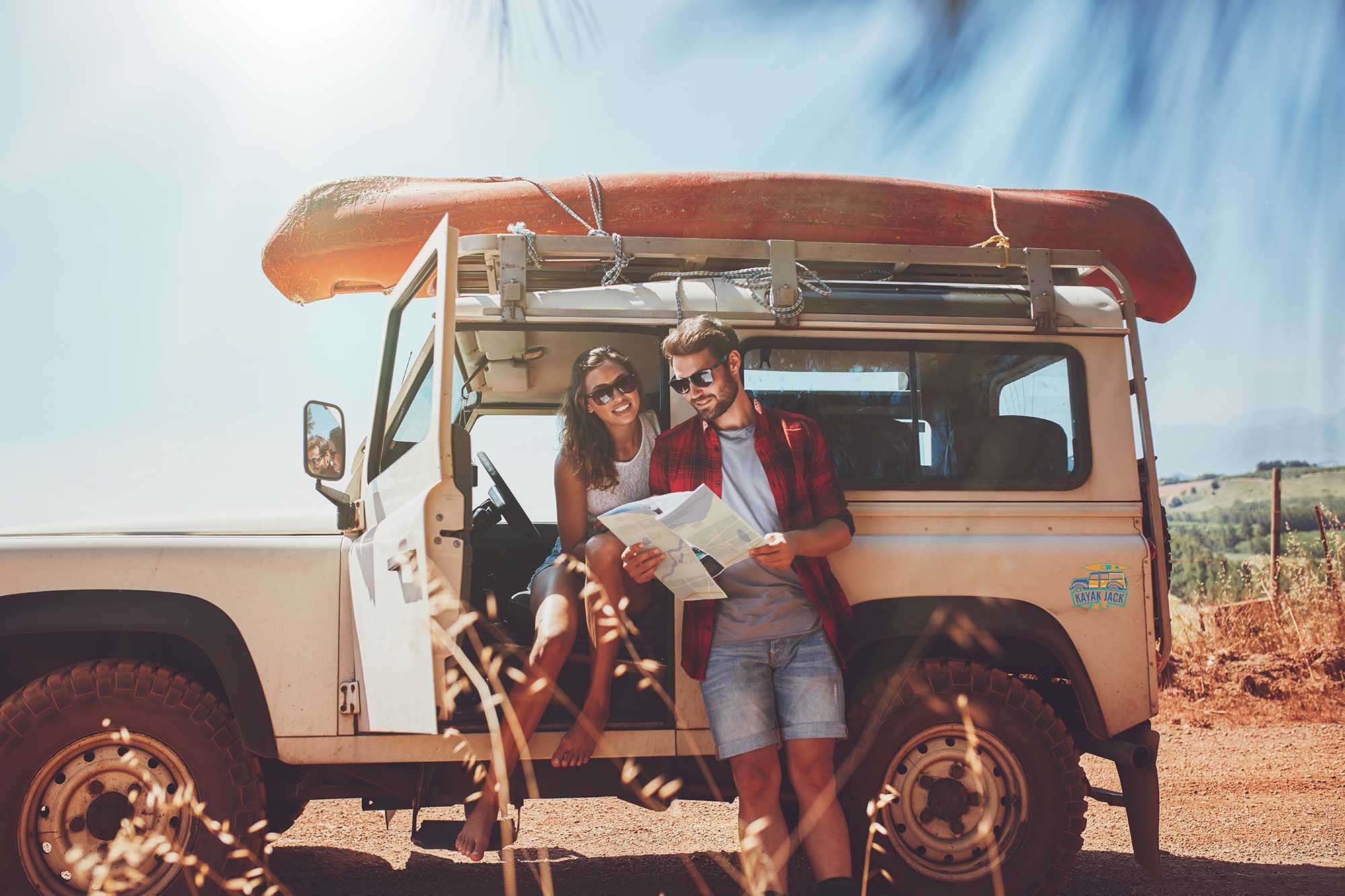
Ride the Rapids! The Secrets to a Perfectly Planned Kayaking Adventure
| Sherri Blum
Hey there, adventure seeker! If you're reading this, you're probably feeling the call of the wild, yearning for the rush of adrenaline that comes from navigating a river's rapid twists and turns. The good news? You're about to embark on a kayaking adventure that will surely satisfy your thirst for excitement.
Well, you're in the right place. Whether you're a seasoned kayaker or just dipping your toes into the world of paddles and rapids, this guide is your ticket to a perfectly planned kayaking adventure. From selecting your dream destination to packing your essentials, we've got you covered. Let's get started!
Choosing the Perfect Kayaking Destination
Finding the ideal location for your kayaking trip is crucial. A serene lake, a bubbling stream, or a challenging river – your choice would largely depend on your skill level and the kind of experience you're seeking. Beginners might prefer calm waters to get comfortable with their kayak, while the more adventurous might opt for the thrill of white water rapids.
Do your research, consider the weather and the time of year, and don't forget to check if the site is accessible and safe. Some of the most stunning kayaking destinations include the crystal-clear waters of Lake Tahoe, the scenic channels of the Everglades, or the exhilarating Colorado River.
Essential Kayaking Gear and Equipment
Now, let's dive deeper into the world of kayaking gear. A successful adventure begins with the right equipment, so it's crucial to invest in quality items that suit your needs. Here's a detailed breakdown of the essential gear you'll need for your kayaking trip:
Kayak
Your choice of kayak will depend on factors such as your size, weight, skill level, and the type of water you'll be paddling in. For beginners, a sit-on-top kayak offers stability and ease of use. Experienced paddlers might prefer a sit-in kayak for better control and maneuverability. If you're venturing into rough waters, a sea or touring kayak with a rudder or skeg can help you navigate with ease.
Paddle
Paddles come in various lengths, materials, and blade shapes. Consider your height, the width of your kayak, and your paddling style when selecting a paddle. Lightweight materials like carbon fiber or fiberglass reduce fatigue, while aluminum or plastic paddles are more budget-friendly. Opt for a feathered paddle (with blades at different angles) to minimize wind resistance and improve efficiency.
Personal Flotation Device (PFD)
A PFD is essential for safety on the water. Choose a Coast Guard-approved life jacket specifically designed for paddling. These PFDs have large arm openings for unrestricted movement and multiple adjustment points for a snug fit. Look for features like ventilated panels, pockets for storing small items, and bright colors for visibility.
Spray Skirt
If you're using a sit-in kayak, a spray skirt can help keep water out of the cockpit. This is especially important in choppy water or when paddling in cooler conditions. Choose a spray skirt that fits both your kayak and your body snugly, with an easy-to-grab grab loop for quick release.
Dry Bags
Keep your belongings safe and dry with a waterproof dry bag. These bags come in various sizes and materials, from lightweight silnylon to heavy-duty PVC. Roll-top closures provide a watertight seal, while transparent windows or color-coding can help you locate items quickly.
Bilge Pump and Sponge
In case water does get into your kayak, a bilge pump can quickly remove it. A sponge is also handy for soaking up smaller amounts of water in the cockpit.
Paddle Float and Paddle Leash
A paddle float is an inflatable or foam device that attaches to one end of your paddle, providing support for re-entering your kayak after a capsize. A paddle leash keeps your paddle attached to your kayak, so you don't lose it in case of an accidental drop or capsize.
Whistle
A whistle is a simple yet essential safety item. Attach it to your PFD for easy access in case you need to signal for help or alert other paddlers of your presence.
First Aid Kit
Accidents can happen, so it's essential to carry a first aid kit with you. Include items like band-aids, gauze, antiseptic wipes, tweezers, pain relievers, and any personal medications you may need.
Appropriate Clothing
Dress for the water temperature, not just the air temperature. Quick-drying, moisture-wicking layers are ideal, as they help regulate your body temperature and prevent chafing. Avoid cotton, as it retains water and can make you cold. In colder conditions, consider wearing a wetsuit or drysuit for added insulation. On hot days, consider a sun shirt, a UPF 50+ shirt to wick moisture and protect you from the sun.
It's also essential to test your gear beforehand. Spend some time familiarizing yourself with how everything works. Remember, on the water isn't the best place to figure out how to adjust your helmet or paddle!
Mastering Kayaking Skills and Techniques
The best way to ensure a successful kayaking adventure? Master your skills before hitting the water. If you're new to the sport, consider taking a few lessons or joining a local kayaking club.
Start by learning the basic paddle strokes, including the forward stroke, the reverse stroke, and the sweep stroke. Once you've got these down, you can move on to more advanced techniques like the draw stroke and the brace.
Remember, practice makes perfect. Try to get some experience in calm, controlled conditions before heading out on a big adventure.
Preparing for Safety on the Water
Safety should always be your top priority. Apart from wearing your PFD, you should also familiarize yourself with safety procedures and protocols.
Always check weather and water conditions before setting off. Avoid going out in high winds or stormy weather. Keep an eye out for hazards like rocks, fallen trees, or strong currents.
In case of emergencies, it's crucial to know what to do. Learn how to do a "wet exit" (getting out of your kayak if it capsizes) and how to get back into your kayak from the water.
Navigating and Route Planning
Getting lost on the water is no fun, trust me. That's why route planning is so important. Before you set off, study a map of the area and make a note of any landmarks.
While you're on the water, stay aware of your surroundings. Keep track of where you are in relation to your starting point.
If you're kayaking on a river, remember to factor in the current. It's easy to drift downstream, but paddling back upstream can be a workout!
Packing Essentials for a Day on the Water
Once you've got the big stuff sorted, it's time to pack the little things that make a big difference. Don't forget your sunscreen, sunglasses, a hat, and water-resistant footwear.
Pack plenty of water and snacks – kayaking is a workout, after all. And last but not least, don't forget to bring a waterproof bag to keep your belongings dry.
Creating Unforgettable Memories
Now that you've got everything sorted, it's time to hit the water and make some memories. Immerse yourself in the beauty of your surroundings, and enjoy the peaceful rhythm of your paddle strokes. Take in the sights and sounds of nature, and let the adventure unfold.
Don't forget to snap some photos to remember the day. Go ahead, capture that perfect Instagram-worthy shot, but also remember to put the camera down and simply take it all in. After all, the best moments are often the ones we keep in our hearts, not just on our screens.
Wrapping Up
And there you have it – the secrets to planning a perfectly thrilling day of kayaking. It might seem a bit daunting at first, but once you're gliding through the water, feeling the wind in your hair and the sun on your skin, you'll know that all the preparation was worth it.
Just remember, the goal isn't just to ride the rapids, but to soak in the experience – to connect with nature, to challenge yourself, and to make unforgettable memories. So take your time, stay safe, and most importantly, have fun.
The call of the wild is strong, my friend, and the river awaits. It's time to grab your paddle, strap on your helmet, and embark on your own kayaking adventure. I can't wait to hear all about it. Happy kayaking!

Leave a comment
Your email address will not be published.